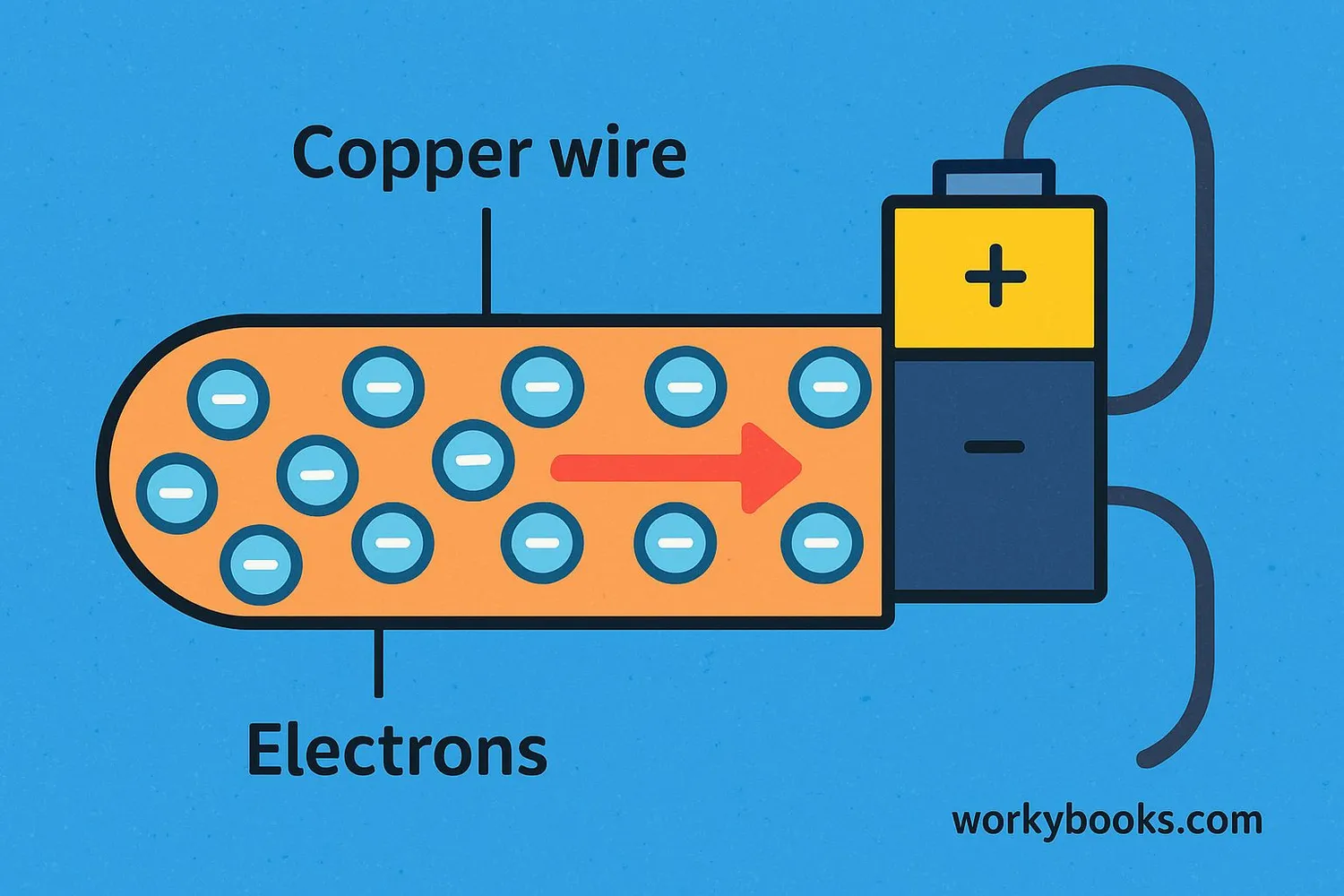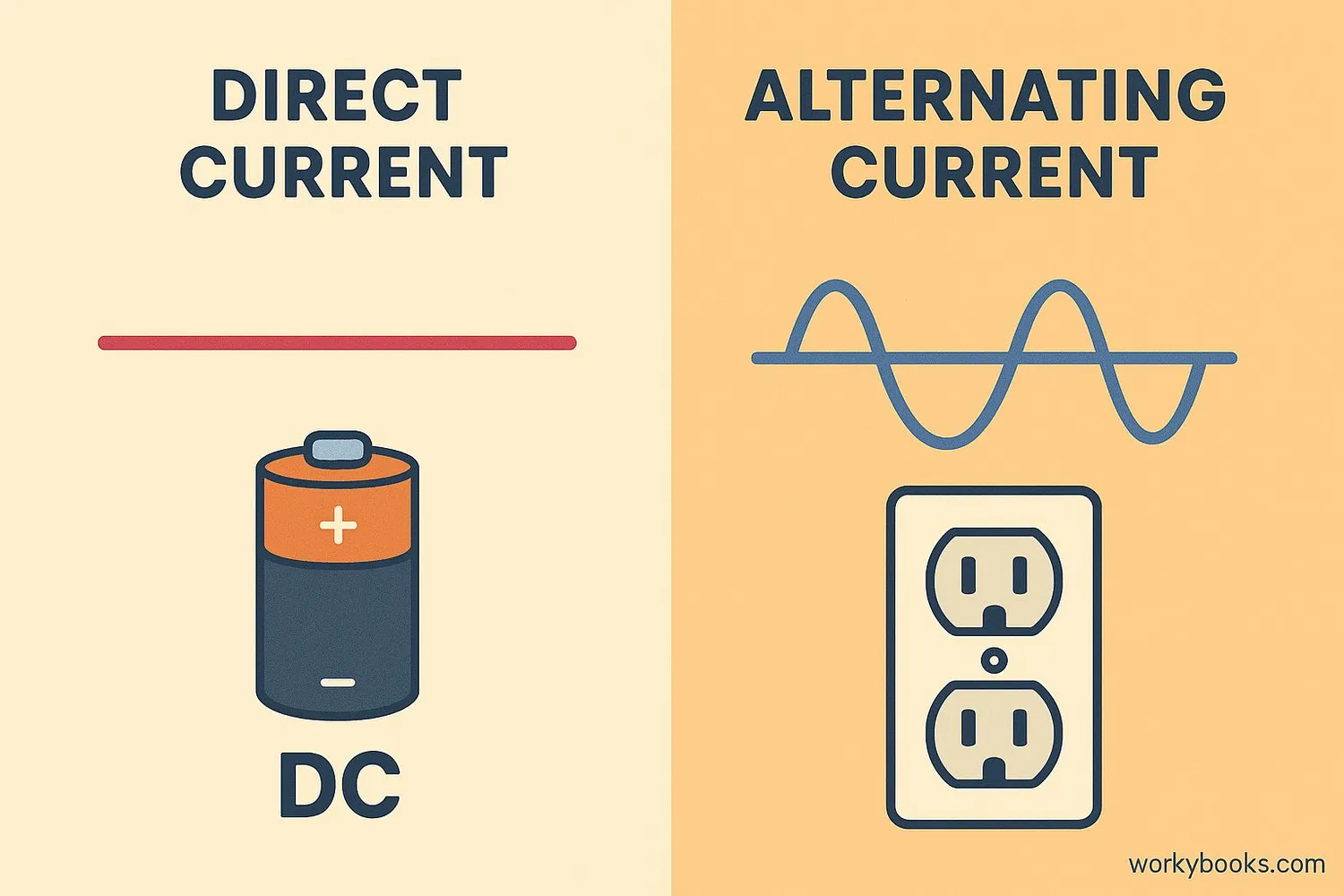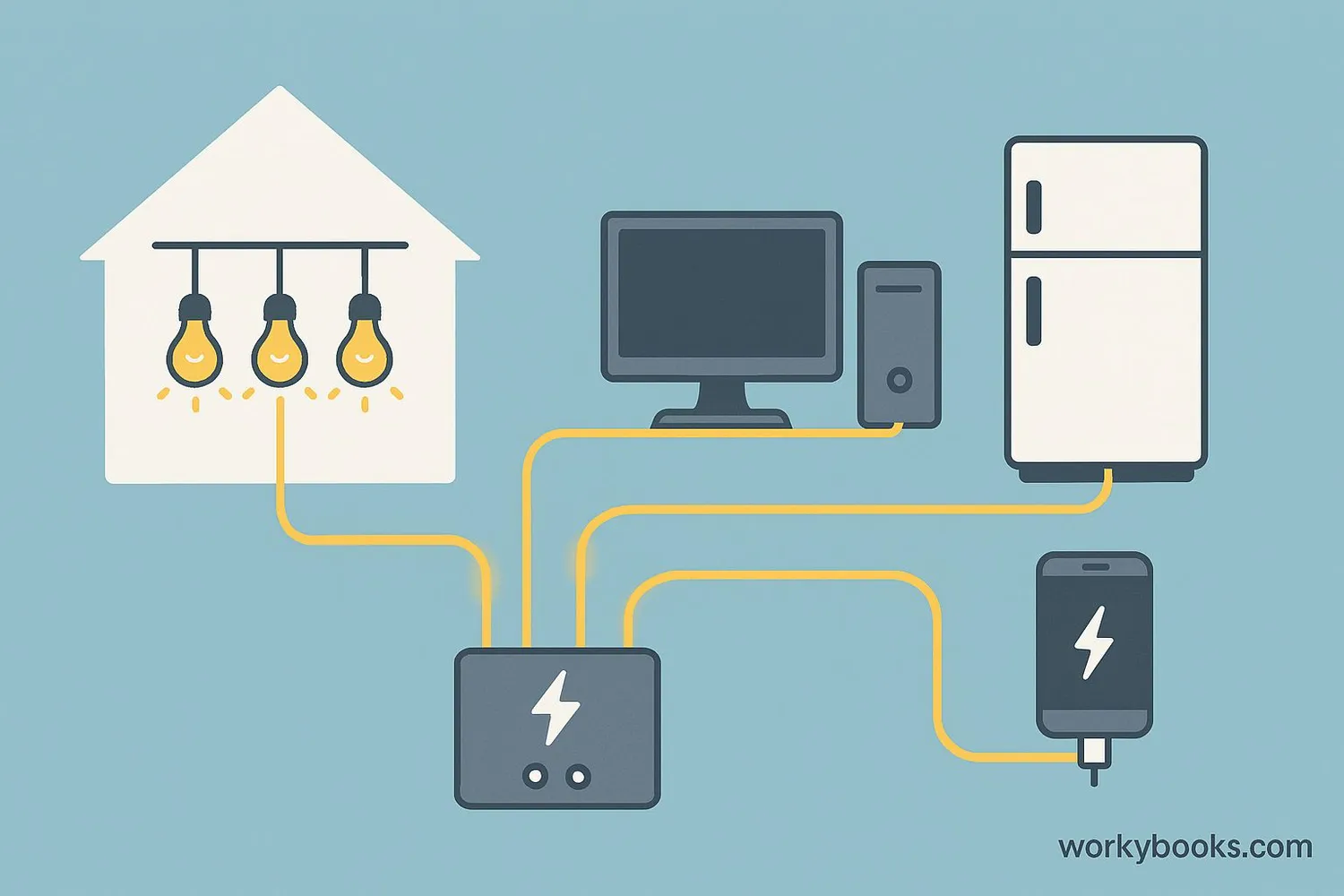Electric Current - Definition, Examples, Quiz, FAQ, Trivia
Discover how electricity flows through wires to power our world!
What is Electric Current?

Electric current is the flow of electric charge through a material like a wire. It's like a river of tiny particles called electrons flowing through a channel. We measure electric current in units called amperes (often shortened to "amps").
Think of electric current like water flowing through a pipe. The water molecules are like electrons, and the pipe is like the wire. Just as water flows from high pressure to low pressure, electrons flow from areas of high electrical potential (voltage) to areas of low electrical potential.
Current Analogy
Electric current is like the flow of water in a river. The voltage is like the height difference that makes the water flow. The resistance is like rocks in the river that slow down the water flow.
Key Fact!
In metals like copper wires, electric current is actually the flow of electrons - tiny particles with negative electric charge.
How Electric Current Works

Electric current needs three things to flow:
1. A source of electrical energy (like a battery or generator)
2. A complete path for the current to flow (a circuit)
3. Something to push the current (voltage)
There are two main types of electric current:
Direct Current (DC)
Flows in one direction constantly. Batteries produce DC current.
Alternating Current (AC)
Changes direction many times per second. This is what comes from wall outlets.
Voltage (V)
The "push" that makes electrons move
Current (I)
The flow of electrons through a conductor
Resistance (R)
How much the material opposes the flow
The relationship between voltage, current, and resistance is described by Ohm's Law:
Voltage = Current × Resistance (V = I × R)
This means if you increase the voltage, more current will flow. If you increase resistance, less current will flow.
Conductors vs. Insulators
Materials like copper and aluminum are good conductors that allow current to flow easily. Rubber and plastic are insulators that stop current flow, keeping us safe from electric shock.
Why Electric Current is Important

Electric current powers almost everything in our modern world! Here's why it's so important:
Powering Devices
Provides energy for lights, appliances, computers, and phones
Modern Conveniences
Enables refrigeration, heating, air conditioning, and entertainment
Medical Applications
Powers life-saving medical equipment in hospitals
Without electric current, we would have no:
• Electric lighting in our homes
• Computers or internet access
• Modern transportation systems
• Many medical technologies
Understanding electric current helps us use electricity safely and efficiently, and inspires future scientists and engineers to create new technologies!
Electric Current Quiz
Test your knowledge about electric current with this quiz! Answer all 5 questions to see how much you've learned.
Frequently Asked Questions
Here are answers to common questions about electric current:
Fun Electric Current Trivia
Discover some amazing facts about electricity and electric current!
Natural Electricity
Electric eels can produce electric shocks of up to 600 volts! They use this to stun prey and defend themselves. That's enough to power 100 light bulbs!
Speed of Electricity
Electricity travels at about 270,000 km per second - that's 90% of the speed of light! This is why when you flip a light switch, the light comes on instantly.
Powerful Lightning
A single lightning bolt can carry up to 1 billion volts of electricity! That's enough energy to power a 100-watt light bulb for about 3 months.
Historical Fact
The first electric power plant was built by Thomas Edison in 1882 in New York City. It used DC current and powered just 400 lamps for 85 customers!


